#indian farming
Text
[Blog]Intercropping In Indian Farming: Benefits and Examples @Kaybeebio

Intercropping is an agricultural practice, that involves cultivating two or more crops simultaneously in the same field, with careful consideration of their compatibility and growth habits. Unlike monoculture, where a single crop dominates the land, intercropping creates a diverse and harmonious ecosystem that can yield numerous benefits. Read all the benefits here at Kay Bee Bio Organics blog.
2 notes
·
View notes
Text
जीएम सरसों पर प्रतिबंध से भारतीय किसानों को नुकसान सुप्रीम कोर्ट को विचारधारा के ऊपर विज्ञान को चुनना चाहिए | Indian farmers suffer from the GM mustard ban. The Supreme Court must favour science over dogma;

Source: theleaflet.in
पिछले दो दशकों से जीएम तकनीक पर पूर्ण प्रतिबंध लगाने पर जोर
सुप्रीम कोर्ट ने जीएम सरसों की रिहाई की मांग वाली अर्जी को स्वीकार करते हुए किसान संघ शेतकरी संगठन से पूछा, 'आप इतने साल कहां थे?'
जैसा कि सुप्रीम कोर्ट एक ऐसे मामले पर विचार-विमर्श कर रहा है जो भारत में आनुवंशिक रूप से संशोधित सरसों के भाग्य का निर्धारण कर सकता है, एक किसान निकाय भारत की शीर्ष अदालत में अपनी आवाज सुनने का प्रयास कर रहा है।
महाराष्ट्र स्थित किसान संघ, शेतकरी संगठन, सामाजिक रूप से संशोधित (जीएम) सरसों पर प्रतिबंध लगाने की मांग करने वाली कार्यकर्ता अरुणा रोड्रिग्स द्वारा दायर याचिका का विरोध कर रहा है। बीटी कपास के साथ अपने अनुभव के आधार पर, किसानों का तर्क है कि जीएम सरसों में खाद्य उत्पादन बढ़ाने और उनकी आजीविका में सुधार करने की क्षमता है।
भले ही उनके आवेदन को 17 नवंबर 2022 को रिकॉर्ड में ले लिया गया, लेकिन यह निराशाजनक है कि जिन किसानों की खेल में सबसे अधिक चमड़ी है, उन्हें अब तक सुप्रीम कोर्ट द्वारा नहीं सुना गया है।
जीएम सरसों की रिहाई की वकालत करने वाले आवेदन को स्वीकार करते हुए पीठ ने पूछा, 'आप इतने सालों में कहां थे?' यह सवाल जीएम की रिहाई के लिए और उसके खिलाफ लड़ने वालों के बीच संसाधनों और शक्ति में असमानता को ध्यान में रखने में विफल रहता है। सरसों।
कार्यकर्ता, अदालत का दरवाजा खटखटाने और अपना मामला बनाने के साधनों के साथ, पिछले दो दशकों से जीएम तकनीक पर पूर्ण प्रतिबंध लगाने पर जोर दे रहे हैं। इस बीच, जिन किसानों को बहुत अधिक लाभ होने वाला है, वे रोजी-रोटी कमाने के दैनिक संघर्ष में व्यस्त हैं। क्या प्रौद्योगिकी के उपयोग के माध्यम से एक बेहतर जीवन चुनने का किसान का अधिकार संसाधनों की कमी और कानूनी रास्ते तक पहुंच से बाधित होना चाहिए?
जीएम फसलों पर प्रतिबंध
पिछले 18 वर्षों से जीएम फसलों का व्यावसायिक उपयोग अधर में लटका हुआ है। 2002 में व्यावसायिक खेती के लिए पहली बार पेश किए जाने के बाद से ही ये फसलें भारत में बहस का एक विवादास्पद विषय रही हैं। अरुणा रोड्रिग्स और अन्य के साथ एक गैर सरकारी संगठन जीन कैंपेन ने 2004 में जीएम जीवों के उपयोग को च���नौती देते हुए एक जनहित याचिका दायर की थी। जीएम सरसों इनका ताजा शिकार है।
भारतीय वैज्ञानिकों द्वारा विकसित, जीएम सरसों में कृषि में क्रांति लाने और किसानों की आजीविका में सुधार करने की क्षमता है। हालांकि, कार्यकर्ताओं ने दावा किया है कि यह पर्यावरण और मानव स्वास्थ्य के लिए खतरा है। दूसरी ओर, किसानों का तर्क है कि प्रतिबंध कृषिविदों के लिए एक बड़ा झटका है और उन्हें अन्य देशों के किसानों की तुलना में नुकसान में डाल देगा जो पहले से ही जीएम तकनीक का उपयोग कर रहे हैं।
आजीविका में सुधार के अलावा, किसानों का मानना है कि जीएम तकनीक उन्हें बदलती जलवायु परिस्थितियों के अनुकूल बनाने, टिकाऊ कृषि को बढ़ावा देने और खाद्य सुरक्षा बढ़ाने में मदद कर सकती है। संगठन ने अपने आवेदन में शीर्ष अदालत से किसानों और कृषि उद्योग के लिए जीएम सरसों के लाभों पर विचार करने का आग्रह किया है। इस तरह की तकनीकों पर प्रतिबंध किसानों को और नुकसान पहुंचाएगा, खासकर भारत के शुष्क क्षेत्रों में, जहां पारंपरिक खेती के तरीके अपर्याप्त साबित हुए हैं। संगठन ने इस बात पर जोर दिया कि याचिकाकर्ताओं के अप्रमाणित और अंधविश्वासी विश्वासों के कारण किसानों को प्रौद्योगिकी का उपयोग करने से नहीं रोका जाना चाहिए। जीएम फसलें पैदावार बढ़ा सकती हैं और उत्पादन लागत कम कर सकती हैं, जिससे अधिक मुनाफा हो सकता है।......
#gm mustard#genetically#genetic genealogy#supreme court#GM mustard ban#indian farmers#indian farming#mustard farming
0 notes
Photo
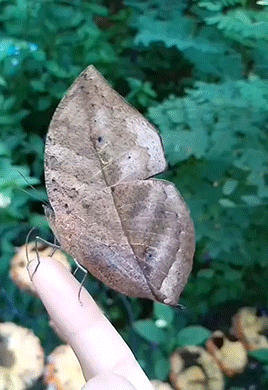

Kallima inachus (oakleaf butterfly)
#kallima inachus#butterfly#orange oakleaf#indian oakleaf#Entopia by Penang Butterfly Farm#malaysia#Insecta#lepidoptera
3K notes
·
View notes
Text
Factory farming is even bigger than you realize
#battery farm#factory farming#animalrights#animal cruelty#animal welfare#animals#animal#farming#factory farms#farms#farmcore#politas#ausgov#auspol#tasgov#taspol#australia#fuck neoliberals#neoliberal capitalism#anthony albanese#albanese government#usa news#usa is a terrorist state#usa politics#usa#american indian#american#america#amerika#amerikkka
19 notes
·
View notes
Text
washington's resting bitch face game so strong his countrymen treated him like a god and elected him unanimously for all sorts of shit.
#simplifying but i think washington had a huge temper so he decided to shut up. and it just worked out really well#so he went. i will continue this strategy forever.#it feels like we take that god image for granted? so it's skipped over in the telling a lot of the time because the story goes#this young man was very brash and fought in the french indian war and then general and btw people think he's a god now#everyone knows he will be elected unanimously everyone!#like when did that happen lmao#greatest pr: resting bitch face. few words.#talk about how much you wanna go farm#george washington#historical hamilton#amrev#anyone know exactly when that godly image took hold?
25 notes
·
View notes
Text
"The category of race was also critical to the second pillar of the CFU’s [Canadian Farmworkers Union] organizing mission: ridding the industry of contractors. Contractors would supply the labour force for the farmers and, in many cases, they held as much power as the farmers. The contractor was responsible for hiring a workforce, maintaining discipline, and making payments. The farmer would not pay the workers directly; instead, the farmer would pay the contractor who, in many cases, would retain the money until the end of the season.
In many instances, the contractor was also responsible for transporting workers between the field and their homes. Since labour contractors were trying to maximize profits, the vehicles they used to transport workers predictably violated many road safety standards. As Chouhan remembers, his first contractor: “came to pick me up in an Econoline van which had no seats in it, there were people sitting on the floor which was quite a shock [laughs]. No seat belts, no nothing.” Many workers have been killed due to accidents in these unsafe vehicles, and, as recently as 7 March 2007, three farmworkers died in a rollover accident while riding in an overcrowded vehicle between Abbotsford and Chilliwack.
Often, contractors were from the same social and ethnic circles as the labourers whom they employed. Charan Gill identified a “colonial mentality” in comments made by farmworkers. Since the contractors who provided them with work shared familial and cultural ties with them, some of which could be traced back to Punjab, many farmworkers did not want to stand up to the contractors. Fears of losing jobs and housing were very real, and such losses could jeopardize their immigration status. Contractors who came from the same community as the workers could manipulate the latter into believing they were on their side, and, because of this, Gill notes: “in spite of our efforts, individual interests [of workers] sometimes invalidated collective interests [of their class]” because some of those workers aspired to be contractors.
Simply getting safety information to farmworkers was also difficult. Since many of the workers could not read or write in English, and some were illiterate in their own languages, they were often dependent on information from the farmer and the contractor. Contractors could intentionally mislead, omit certain information, or outright lie to their workers about their legal rights. This delayed organizing efforts. To counter this information block, organizers would try to go to local temples on the weekends, where many workers went to pray. However, the labour contractors also had control over the temple executives, so organizers were often refused the right to speak. Frustrated, the organizers developed a two-part strategy. First, they would have “kitchen meetings” in which the organizer would contact one worker for a meeting in their home, and that worker would contact neighbours and friends, so “that way [they would] not [be] afraid to be seen by a labour contractor or in the temple or in a public place.” Second, because many families used the temples for social events, the organizers would ask family members to invite the CFU and thus circumvent the temple executives as organizers of social events had the “absolute right to invite anyone they want[ed].”
These strategies helped the CFU reach out to potential members and to provide valuable information regarding their legal rights. Unfortunately, despite the efforts of the CFU, contractors are still a part of the industry to this day, and anyone driving through the agricultural areas of British Columbia’s Lower Mainland can witness the painted-over shuttle buses that daily transport farmworkers from home to field."
- Nicholas Fast, ““WE WERE A SOCIAL MOVEMENT AS WELL”: The Canadian Farmworkers Union in British Columbia, 1979–1983,” BC Studies. no. 217, Spring 2023. p. 44-45.
#canadian farmworkers union#participatory democracy#union organizing#farm workers#agricultural workers#indian immigration to canada#immigrant workers#racialized workers#farming in canada#working class struggle#academic quote#strike#union politics#labour contracting#exploitation#reading 2024
8 notes
·
View notes
Text
14th May 2024 - Home, Northumberland, UK.








Photos by @warrenwoodhouse #warrenwoodhouse
Camera: iPhone XR (Product Red)
Description: Ducklings learning to swim in the bath
Date & Time: 14th May 2024 at 12:11 pm
Location: Home, Northumberland, UK.
#warrenwoodhouse#2024#14th May 2024#ducks#ducklings#farming#indian runner ducks#indian runner duck#photos#photography#iphonography#warrenwoodhousephotos#photographers on tumblr#ducks of tumblr#ducks on tumblr#uk#northumberland
5 notes
·
View notes
Text
Prettiest Unique Garden Veggies

•Purple Majesty Potatoes

•Chioggia Beets


• Scarlet Runner Beans
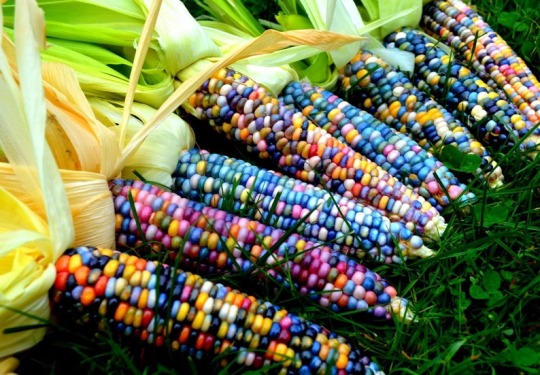
• Glass Gem Corn

• Okinawa Spinach

• Rainbow Carrots

• Pineberries

• Tricolor Pole Beans

• Bolivian Rainbow Peppers
#garden#gardening#homesteading#junko on the farm#cute#pretty plants#beautiful#unique#vegetables#interesting#fruits#beets#peppers#glass gem corn#indian corn#pineberry#pineberries#rainbow#potatoes#purple#colorful#variety
63 notes
·
View notes
Text
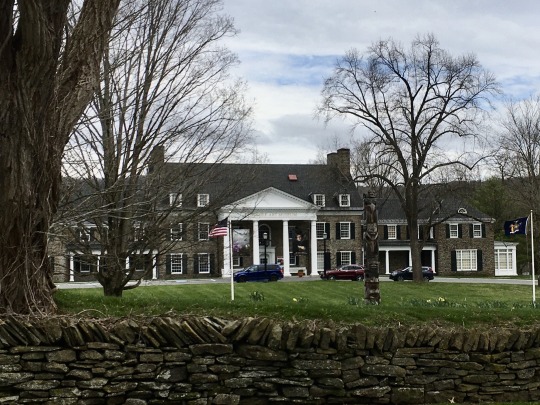



Friday, April 19, 2024 - Vacation Day 5
I took a drive out to Cooperstown today to have lunch with a friend. It was a very nice visit and I got to meet the Farmers’ Museum’s brand new three-day-old baby cow.
#curator#vacation#cooperstown#norbu nepalese indian restaurant#fenimore art museum#farmers museum#cow#farm#roadtrip
4 notes
·
View notes
Photo

#cottagecore#duck#duckcore#duck core#white duck#indian runner duck#duck aesthetic#ducks#duckling#farmcore#farm aesthetic#farm animals#waterfowl#animals
43 notes
·
View notes
Text
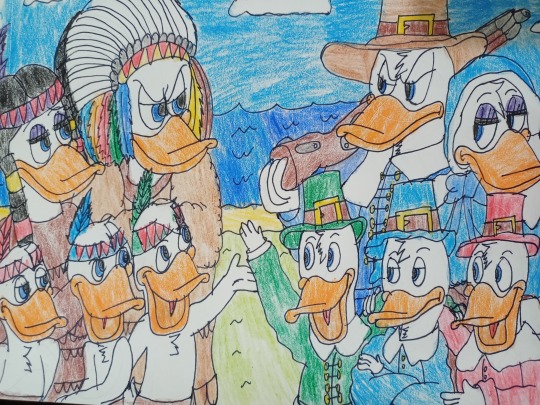
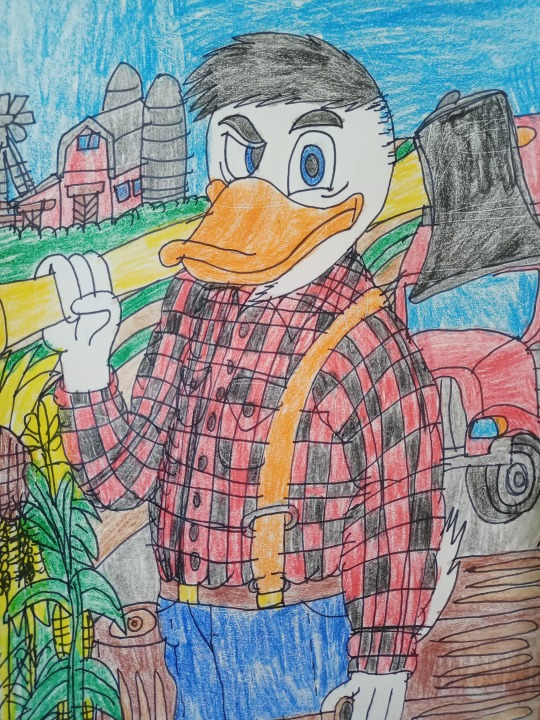



Duckvember - Rural, Holiday and Shy Duck (Ducks)
First off, Happy Thanksgiving and sorry for the delay!
I made three drawings for Duckvember and Thanksgiving. The first drawing is about Thanksgiving, which I will talk about later. The second drawing is about the Rural Duck and I drew Abner Whitewater Duck who is Donald's cousin and Fethry's brother but in a modern way as he would look now. He works as a logger, but he is also a truck driver, farmer, cattle breeder and forester, and behind him are the backgrounds that characterize all his professions and that he usually lives in the forest, but sometimes on a farm.
The third drawing is both Rural and Shy and refers to Donald's grandfather Grandpa Duck (in some cases it's Humperdink Duck, although he doesn't look like it) from the classic 1955 short "No hunting" directed by Jack Hannah where Donald embodies Grandpa's spirit and he goes hunting, but the hunt has turned into a real war. And one scene where they get away from the gun and the grandfather says to him: "Just a hair's breadth, son! And that was close!" at least when I listened in my mother tongue when I was a little boy. Definitely one of Donald's favorite classic shorts that I loved watching.
And of course Thanksgiving, that is, the first drawing for the Holiday. I drew a meeting of two cultures, one the Pilgrims, and the other native American Indians, i.e. Donald, Daisy and Donald's nephews from one side and the other. Well, after 1620, the Indians helped the settlers survive the winter by giving them food, and the settlers in return gave them the same and thus the holiday of Thanksgiving was born. Certainly drawn in the clothes they wore at the time, in the 17th century. Unfortunately, relations between the Indians and the settlers would deteriorate, but not during this period, but much later, in the 19th century. Certainly, many American states were formed by the fusion of native Indian culture with the settler European peoples. Yes, Donald and his family also have Native American ancestry. And what I drew, don't take it seriously. Sorry.
Happy Thanksgiving again (in America it's the fourth Thursday in November and in Canada it's the second Monday in October) and sorry for the delay! And I hope you like these drawings.
#duckvember#duckverse#happy thanksgiving#thanksgiving day#donald duck#daisy duck#donsy#huey dewey and louie#grandpa duck#ducktales#no hunting#abner whitewater duck#abner duck#native american#pilgrims#history#history au#huey dewey and louie duck#farm#indians#americans#cartoons#duck comics#disney duck comics#my fanart#fanart#disney cartoons#duck family#rural#comics
26 notes
·
View notes
Text
"Hindu nationalists have used the ongoing conflict in Gaza to vilify other Muslims globally. BJP troll farms have spread disinformation and anti-Palestinian hatred online, and Hindu nationalist groups in India have organised pro-Israel marches.
Where does this curious Hindutva-Zionist solidarity spring from? One origin is from the earliest Hindu nationalists who modelled their Hindu state on Zionism."
#hindutva#hindu nationalists#hinduism#hindu mythology#hindu#nationalists#popular front for the liberation of palestine#palestine#free palestine#freepalastine🇵🇸#muslims#muslim#bjpmafia#bjpparty#bjpnews#anti bjp#bjp#trolls#trollhunters#troll#farms#american indian#indian#india love#india westbrooks#travel agency in india#india#israel#israhell#zionistterror
12 notes
·
View notes
Text
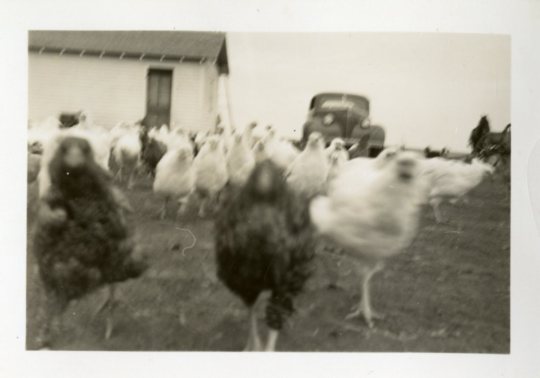
Farming (Chickens)
Record Group 75: Records of the Bureau of Indian Affairs
Series: Photographs
National Archives Catalog
3 notes
·
View notes
Text
"In many ways, the Canadian Farmworkers Union (CFU) and its predecessor, the Farmworkers Organizing Committee (FWOC), operated like a trade union. The CFU executive chose three related areas on which to focus its organizing efforts: (1) improving working and living conditions, (2) eliminating the contractor system that further exploited already vulnerable workers, and (3) fighting to include farmworkers in the BC labour code, affording farmworkers rights to minimum wage and health benefits.
Working and living conditions constituted one of the main pillars that organizers rallied around to push their efforts. One story was often used in CFU documents as a rallying cry:
On July 16, 1980, little Sukhdeep Madhar lay sleeping in a cow stall converted into sleeping quarters when, unknown to her parents working in the fields close by, she rolled off her cot. The seven month-old baby drowned in a bucket of drinking water before being discovered. Ruling the tragedy as an accidental death, Dr. Bill Macarthur, Coroner, said that working conditions on the farm were like those found in Nazi concentration camps.
Further, while out in the field, workers found that many farms did not have running water or washroom facilities. Other farms did not have places for children who had to attend work with their parents (or for workers on breaks) to sit in the shade on hot days. In addition to unsafe working conditions in the field, workers who did not have enough money for housing would have to live in converted barn stalls on the farm where they worked. These stalls would often have simple hay and straw as flooring with small cots for sleeping. Some living quarters did not have running water, heating, or washroom facilities. Finally, it was not uncommon for farm owners and operators, or even for the contractors who acted as intermediaries, to withhold wages from workers until the end of the season (should they be paid at all).
Despite its small size, the CFU was relatively successful in improving working conditions, especially with regard to securing stolen wages. The first test for the FWOC was a dispute between Mukhiter Singh and the contractor that he had hired to provide a labour force. On 17 July 1979, workers contacted the FWOC to help set up a picket line after they discovered that Mukhiter was withholding $100,000 owed for six weeks of labour because he was unsatisfied with the pickers’ work. The FWOC immediately sent out “several dozen Committee members” and “joined two hundred workers on the picket lines.” After a tense standoff, Mukhiter offered to pay $40,000 in wages, but the farmworkers refused the offer. After roughly two hours of negotiations with Chouhan, Mukhiter paid the workers $80,000 and the dispute was settled. This incident was the first major victory for the FWOC.
The following year, a larger battle took place with a much larger grower: Jensen Mushroom Farms in Langley. On 18 July 1980, despite the grower’s assertion that “if they don’t like it [working conditions], they can quit,” Jensen Mushroom Farms became the first agricultural work site to be certified by the Labour Relations Board (LRB). While this did not mean the workers had a contract, the LRB ruling did mean that the union could negotiate on behalf of the workers. This was the first ruling of its kind in BC labour history. The first signed contract would come from a different farm, Bell Farms. The owner, Jack Bell, was relatively sympathetic to unions and did not offer any resistance to workers who organized for union representation. That LRB certification would come on 3 September 1980, and the first contract would be ratified on 18 November.
While getting a certification was the first step, the process to signing a contract could be extremely drawn out. After nine months of negotiations at Jensen Farms with little progress, the CFU voted to strike on 14 April 1981. Here, Jensen demonstrated his resolve to prevent a union from entering his workplace. On the first day of picketing, an altercation between Chouhan and some of Jensen’s family members left Chouhan with a cut on his forehead, and each side pointed to the other as the instigator. A CFU organizer at the picket line, Sandi Roy, describes in a police report how Annie Hall, Jensen’s daughter, struck Chouhan in the head with keys, “causing him to bleed profusely.” Immediately after the altercation, Murray Munroe, Jensen’s son-in-law, “and at least three of the passengers of both trucks [that had transported Jensen’s family to the picket line] exited from the trucks and began running towards Mr. Chouhan and pushed him into a roadside ditch.” No legal action was taken by either party.
As the strike wore on, the CFU described “various forms of violence from name calling, to car pounding, to a physical scuffle, to telephone wires being cut, to trucks being chased at high speeds, to an attempt to burn down a trailer while a picketer was sleeping inside.” Despite ten workers scabbing (union strikebreaking) and extreme tension on the picket line, the line held strong until September 1981, when it was finally lifted. Formal contract negotiations would not recommence until May 1982, and on 30 July 1982, more than a year after the certification, a formal contract was signed.
Getting a contract after a long strike was one matter, but managing to maintain certification with a stubborn owner was also a difficult task. According to the CFU, the fourteen remaining workers who returned to work at Jensen’s were evenly split on the issue of the union. In June 1983, ten months after the strike’s conclusion, the number of people who worked at Jensen’s had increased to forty seven, and the turnover rate was high. This meant that many of those who supported the union had left and that those who remained were now outnumbered in the workplace. Jensen also began to hire his immediate family members as employees to reduce the strength of the union. The family members intimidated workers who were worried about being identified to the employer as pro-union. When shop stewards were elected, Jean Hall – whose relation to the aforementioned Annie Hall is unclear – was elected for labourers and Rajinder Gill was elected for pickers. The CFU claimed that “the election of Jean Hall was orchestrated by Tove Nesbitt and Jens Jensen (Jensen’s daughter and brother).”
Clearly, Jensen was determined to break the union by inserting his family members into the union’s structure. Union meetings became difficult places to be and were reported by workers to be dominated by Jensen’s family members. According to the CFU, “at one time Jensen had nine family members working at the farm and on average there were seven.” Workers felt intimidated at meetings because they feared that their concerns would be passed back to Jensen and that they could be disciplined or fired. On 1 April 1983, Jensen’s employees applied to the LRB for decertification, and, despite the CFU’s confidence that the decertification vote would fail, on 8 July it passed by a count of 23 to 22. The CFU, understandably disheartened, put some blame on recent immigrants, who were “in awe of ‘authority’ figures” and did not want to appear pro-union to new employers.
During an investigation of Jensen Farms by the provincial government’s Ministry of Labour, R.F. Bone noted some troubling practices on the part of the employer. First, at the time of the strike, it was estimated that 90 percent of the workforce was South Asian and that most supported the union. During the strike, many of these workers left for other jobs because they needed to support themselves. After the strike, Bone noted: “all employees hired (approx. 17) have been non-East Indian, except for four young ladies, all related to the only two East Indians (Gurmit Kaur and Sukhbir Kaur) employed before the strike who then and still are strongly anti-union.” These hires were Euro-Canadians and Laotians. Since the mushroom farm had different greenhouses, Jensen had the Laotians working in areas away from the pro-union employees and had scheduled the pro-union employees to work during union meetings. This tactic allowed the anti-union workers who still attended meetings to elect Jean Hall and Gurmit Kaur, workers who scabbed during the strike, to be delegates for the CFU National Convention in April 1984. Both delegates were expelled from the convention after this revelation and were deemed members “not in good standing.” Finally, Jensen attempted to have the CFU barred from any certifications for one calendar year – an attempt that was denied by the LRB.
This battle had an underlying racist tone. As demonstrated by Jensen’s practices after the strike, Jensen was actively avoiding South Asians. Other anti-union employees also hinted at an ethnic divide. Fred Forman, a white worker hired after the strike, suggested: “if I had a grievance, I don’t think it would work because I’m the wrong colour.” Farmers, including Jensen, used the idea that the CFU was an exclusively South Asian union to discourage membership among newly hired Laotians and whites as well as to discredit the union among its current members."
- Nicholas Fast, ““WE WERE A SOCIAL MOVEMENT AS WELL”: The Canadian Farmworkers Union in British Columbia, 1979–1983,” BC Studies. no. 217, Spring 2023. p. 41-44.
#canadian farmworkers union#participatory democracy#union organizing#farm workers#agricultural workers#indian immigration to canada#immigrant workers#racialized workers#farming in canada#working class struggle#academic quote#strike#union politics#scabs#strikebreaking#reading 2024
2 notes
·
View notes
Text
🍎 Apple picking day! 🍎





6 notes
·
View notes
